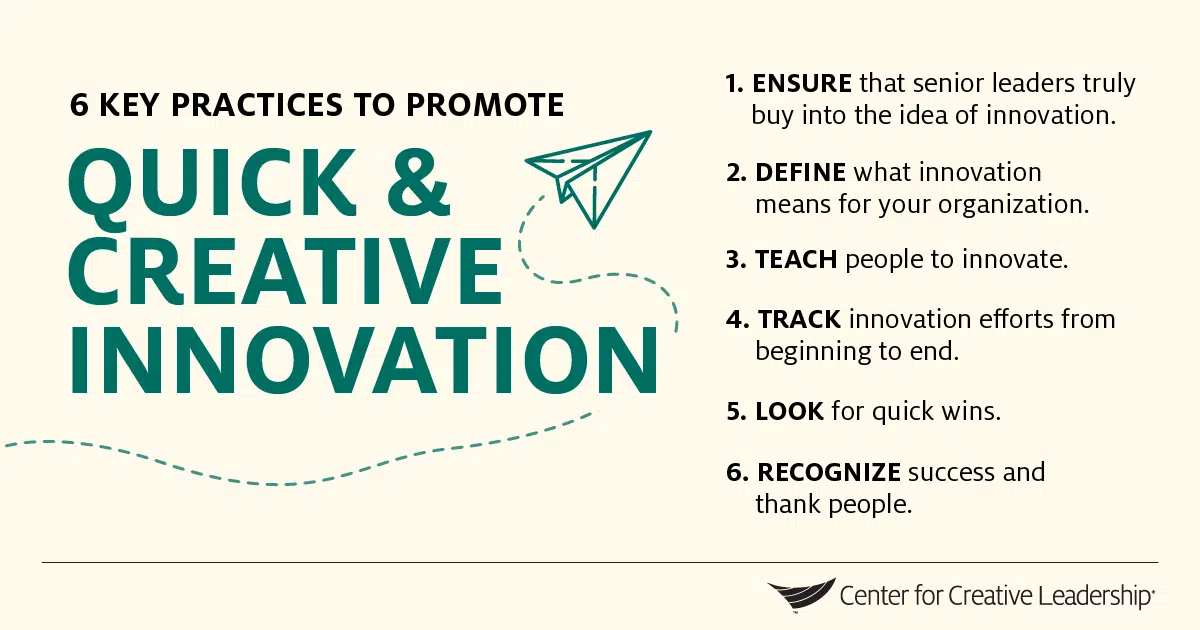Practices Leaders Can Use to Drive Change & Innovation
Innovation may be standard operating procedure at venture capital-funded startups and tech goliaths such as Apple, Amazon, and Google. But it’s often a struggle for organizations in more “traditional” sectors, such as insurance, banking, or government.
Yet even in these sectors, executives and managers recognize a need for innovation.
During everyday operations, leaders of these organizations must find ways to balance the tensions of their industries, complying with complex regulations or aggressively managing risks while also driving change and innovation in order to create more value for their customers.
Financial services firms, government agencies, and other more traditionally cautious organizations must be deliberate in adopting pro-innovation behaviors and changing their culture so they can operate efficiently while also finding ways to innovate and evolve.
That need is underscored during times of crisis or upheaval, as in the recent coronavirus pandemic and its aftermath, but it’s an ever-present tension.
How to Promote Organizational Change & Innovation
6 Practices to Spur Creativity
We recommend these 6 practices that can spur creativity and add quick and creative innovation, even in industries or sectors typically considered “slow and stodgy.”
1. Ensure that senior leaders truly buy into the idea of innovation.
It’s not enough for the top management team to nod their heads when the CEO says, “Be more innovative.”
Senior leaders need to put their money, and their behavior, on the line. They must foster organizational innovation by supporting the innovation equation, and remember that the most concrete way they can support organizational change and innovation is by funding innovation activities and protecting them, even — and maybe especially — during challenging times or market downturns.
2. Define what innovation means for your organization.
It’s not just creativity. Innovation is a business discipline that creates value for customers in new ways and earns a measurable return.
Focus on key drivers of value for your organization, which might be things like logistics expertise (Amazon), customer service (Starbucks), or innovative products (Apple). Look for ideas in line with your business strategy.
3. Teach people how to innovate.
Generating new ideas is only part of innovation. Consider whether leaders and managers are subconsciously encouraging, or sabotaging, innovation — and help them adopt new ways of evaluating fresh ideas. Also, ensure they are fostering innovative mindsets on the team.
4. Track innovation efforts from beginning to end.
Just because it’s creative doesn’t mean you can’t measure and monitor it. Organizations should track inputs (how many new ideas are being generated) as well as outcomes (the ROI of innovative ideas that are implemented).
5. Look for quick wins.
Even with senior leaders on board and modeling innovation-friendly behavior, it’s easy for a traditional corporate or government culture to fall back into its old practices. By finding and implementing “quick wins,” leaders can cement their commitment to organizational change and innovation.
Pilot projects are a good way to manage the risks of innovation while still giving them a true trial in the marketplace.
6. Recognize success and thank people.
Innovative organizations explicitly thank people for their ideas and contributions — even for ideas that aren’t implemented.
A thank you can be anything from a hand-written note from a senior executive to an annual awards ceremony to honor innovators. Showing gratitude will make you a better leader.
While it’s harder to drive change and innovation in some industries, leaders always have the choice of going against prevailing assumptions and choosing to build more innovative organizations.
That choice itself is an example of promoting innovation.
Ready to Take the Next Step?
Help drive organizational change and innovation with a customized learning journey for your leaders using our research-backed modules. Available leadership topics include Influencing Skills, Innovation Leadership, Leading Through Change & Disruption, Learning Agility, and more.













